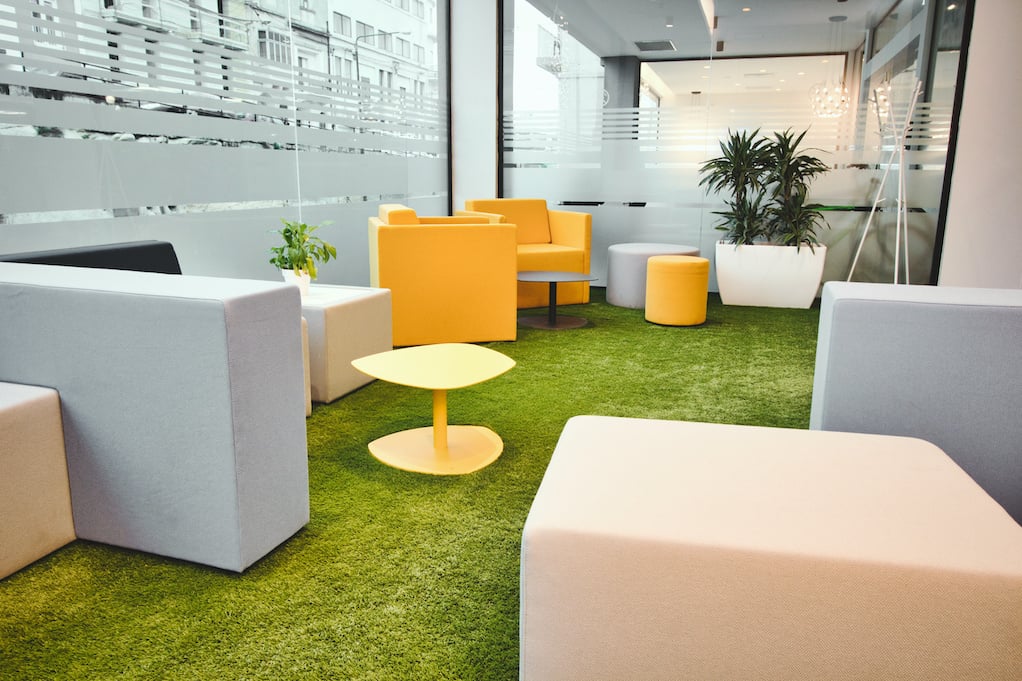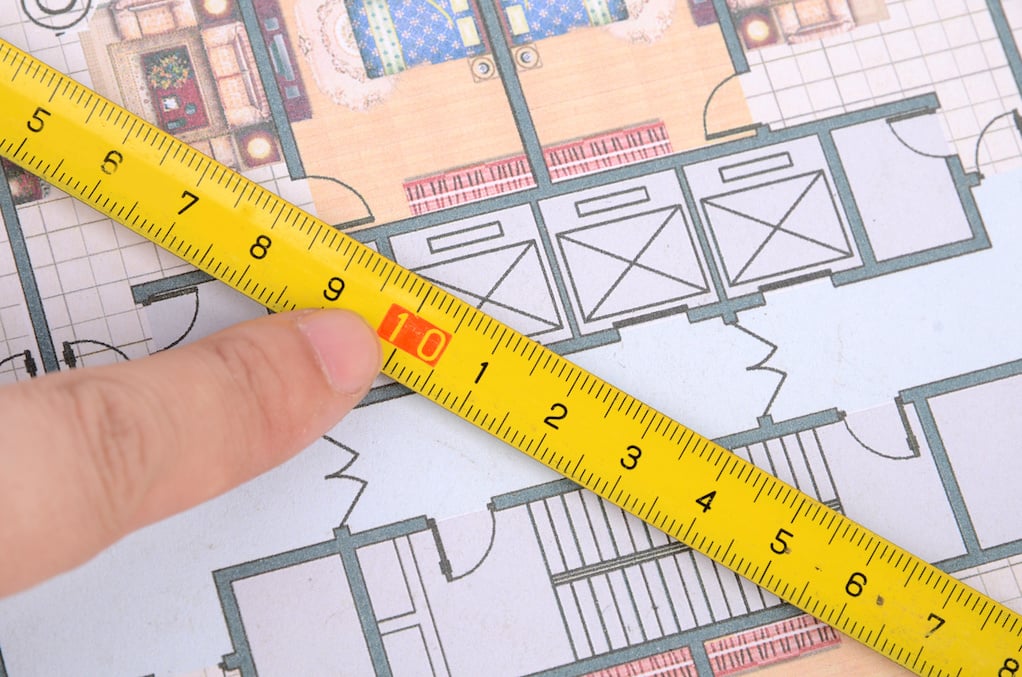In this article, we explore:
- The difference between usable and rentable square footage and why it matters
- How to calculate usable square footage for your office space
- How rentable square footage includes common areas and how it's calculated
- The impact of load factors on your rent and occupancy costs
- How Tenant Reps can help negotiate the best terms for your usable and rentable space
Size matters when it comes to commercial office space. After all, you need to balance prioritizing a comfortable environment with enough space for your team, all while keep your office space fully utilized.
Also, the size of your commercial space is a main determinant of your monthly rent. So, there’s no room for error.
When you're considering the cost of occupying a particular office, it's important to understand that your lease will establish two different sizes: usable and rentable square footage. Understanding what these terms mean is vital to comparing various offices and negotiating a fair deal.
Knowing how much space you really have vs how much common area there is within the building is key to not getting ripped off.
Usable Square Footage Defined
The usable square footage of an office tells you how much space your company will have to occupy. It includes all the floor space within the walls of the area that you are leasing. This is the number that you'll need to consider when deciding whether a particular office is ideally sized for your needs. Think of it as the amount of space you can carpet.
Calculating Usable Square Footage
Your usable square footage is the actual area of your space as measured within the demising exterior walls of your suite. If you have a 200-foot by 200-foot rectangular space, you would multiply the 200 feet of length by the 200 feet of width to come up with 40,000 usable square feet.
In the event that you have a shape that has a more complex shape, you can use the methods of other calculations or depend on the measurements provided by an architect, engineer or space planner.
Rentable Square Footage Defined
The rentable square footage of an office includes the usable square footage plus a percentage of the floor space of all shared areas in the building.
Common areas, including communal restrooms, hallways, lobbies, cafeterias, gyms, and even on-site property management offices, may be included in this calculation. As lease agreements require tenants to help pay for the cost of maintaining shared areas, it's the rentable square footage, not the usable square footage, that is used to calculate your rent.

Calculating Rentable Square Footage
Your rentable square footage is equal to your usable square footage plus your pro-rata share of the common areas of the building.
To arrive at the rentable square feet, refer to The Building Owners and Managers Association (BOMA) standard. The original BOMA standards were developed in 1915. Although they have since undergone revisions, updated standards are utilized internationally to calculate floor area.
BOMA's Office Standard provides a consistent way to measure space, so that landlords and tenants can accurately compare the amount of space in different buildings. This standard is also used to calculate the value of office leases, and to determine how much rent can be charged for a given amount of space. BOMA's Office Standard is widely recognized and used by the commercial real estate industry.
Funny enough, some landlords don’t like to fall in line with BOMA standards. Of course, this should raise some eyebrows on your end, but if you don’t have an expert guiding you, frankly, you’ll probably never even know it. So, make sure you have your Tenant Rep expert, who has a fiduciary to you, involved in the process.
Essentially, though, to calculate your rentable square feet, you need to know the building's total rentable area and its usable area.
Rentable Square Feet Calculation
Imagine a 50,000-square-foot building with 42,000 usable square feet and 8,000 square feet of common area. If you had a 4,200 usable square foot space, you would find your pro-rata share by dividing 42,000 into 4,200 to find that you have 10% of the building. That is your pro-rata share.
Then, you multiply the total common area (8,000 SF) by your pro-rata share of 10%. This gives you your share of the common area -- 800 SF.
800 SF of the common area plus 4,200 SF of the usable area gives you a total rentable square footage of 5,000 SF. In some markets, this is referred to as a Load Factor, and in some, it is referred to as a Loss Factor.

Usually, though, you will get your rentable square footage from the landlord. Just be careful to make sure that it seems reasonable. (Your Tenant Rep, architect or space planner can help you judge this.)
Load Factors
The difference between your property’s rentable and square feet is the load factor. In most markets, paying for a load factor is a fact of life when leasing space in a building with interior corridors or shared areas.
Once you know the load factor, you know how much extra space you pay for. Reviewing load factors can help you compare different buildings. The calculation is as follows:
|
Load Factor = Rentable Square Feet / Usable Square Feet |
Typically, buildings with lavish public areas will have higher load factors, meaning that you pay more rent for space that isn't technically yours. However, design quirks like large elevator lobbies, wide hallways, and oversized bathrooms or storage areas can also inflate the load factor. If you can find two roughly comparable buildings with different load factors, choosing the more efficient one will reduce your occupancy costs.
This is not all bad, though. It truly depends on your needs for this operation. For instance, if it is for a prestigious law firm, they will want a building to reflect that prestige, and it will have a higher Load Factor. In this example, an “A” class building with lavish lobby areas, gyms, and other amenities may have a Load Factor (or Loss Factor) of 25%. That means, in addition to the carpeted areas of your office, you’re paying for an additional 25% in common areas.
If, however, this office space is for a more utilitarian back-office space, you probably want to find a building with something like a 15% Load Factor. For a multi-tenanted floor, this is probably the minimum Load Factor because you have shared hallways, bathrooms, and a lobby area.
Understanding Why Usable vs Rentable Square Feet Matters
Confusing rentable and usable square footage can lead to problems down the line. Tenants who mistakenly think the rentable square footage refers to their office space will find themselves with much less room in their offices. In addition, the rentable square footage is what ultimately impacts your occupancy costs, so you'll want to pay the most attention to this number during the negotiating process.
Rentable and Usable Square Footage Tips
Break Out Your Measuring Tape.
While taking the time to measure an office yourself is time-consuming, it's a good idea to do so. If this is a small office, then perhaps you may feel up to measuring the space. If this is anything above 5,000 square feet, we would recommend having an architect field measure the space.

At the very least, you will (or should be) provided with detailed, scaled floor plans. You can use those to spot check the dimensions shown to what is actually there.
To calculate the usable square footage, you'll want to measure the length and width of each room in the office as well as hallways and then add the numbers together. If your calculation differs greatly from the landlord's, request to measure the space together. Or, as suggested above, for not too big an investment, you can get a skilled space planner or architect to field measure and verify the landlord’s measurement. Nothing beats having unassailable facts in a negotiation.
Get the Details on Rentable Square Footage.
A reputable landlord should be willing to make the equation used to calculate rentable square footage calculation as transparent as possible. It should be in line with the BOMA standard. However, to ensure you get the best deal, it is key to double-check the following:
How was the Percentage Calculated?
Ask for the total square footage numbers and calculate this figure yourself.
|
The percentage of the shared spaces that you're responsible for should correspond to the percentage of the building that you will be occupying. |
Note, if you are a small tenant in a big pond, the landlord may give you some pushback on getting these numbers. That said, your broker, a Tenant Rep, can get them for you. Be careful how you approach the landlord on this. Better yet, have your Rep handle it diplomatically.
Major tenants can also push for audit rights within their lease. Note, that landlords are reluctant to give audit rights on their Op Ex, so while you should ideally get this in your lease, you need to be sensitive to how much the landlord needs and desires your tenancy. Depending on the size of your space and even the size of your company, you may or may not get this.
Audit rights will allow you to look through a landlord’s books to assess how accurately their pro-rate shares and expense pass-throughs are calculated. If you choose to exercise this option, you will likely be the party paying for this audit. However, when negotiating your lease, you could include a provision that would leave your landlord financially responsible for the audit if any inaccuracies are discovered.
How Tenant Reps Find The Optimal Rentable vs Usable Square Feet
When it comes to most office buildings, there’s more than meets the eye when determining what space you pay for. It is inevitable that you’ll be responsible for space outside of your direct suite. However, that doesn’t mean that your landlord’s broker will always be fair about the calculation.
Your landlord has sophisticated representation (the Landlord’s Brokers) who works in the industry every day and has a fiduciary to get them the highest price. Level the playing field by retaining a True Tenant Rep™. A True Tenant Rep™ can be the key to finding you the best site, at the best price and with the best terms for your commercial real estate. Not only this, but they will negotiate the lease terms on your behalf. They can find and leverage alternating load factors with other considerations to create competition amongst landlords, driving up the value of your tenancy.
Learn how the tips and tricks from True Tenant Reps™ that will find you the best office for the best price.
Want to talk to a True Tenant Rep™ yourself? At iOptimize Realty® we have over three decades of market intelligence, equipped to direct you to your most efficient CRE portfolio.









